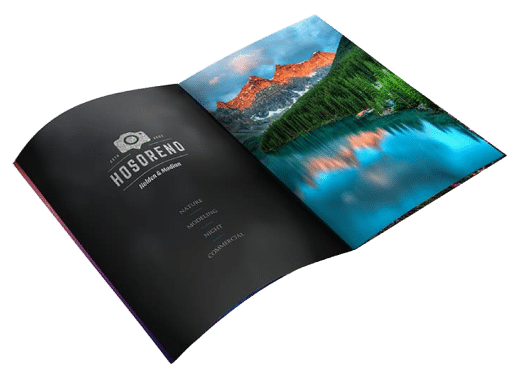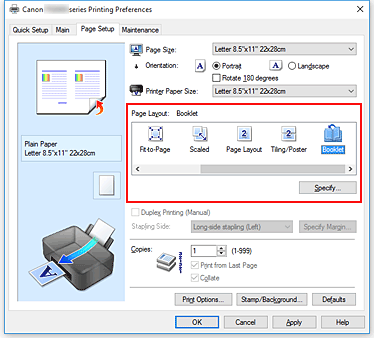Why More Companies Are Turning to Local Booklet Printing Services
Why More Companies Are Turning to Local Booklet Printing Services
Blog Article
The Necessary Overview to Comprehending Booklet Printing Options and Techniques
The procedure of pamphlet printing includes multiple factors to consider that can substantially influence the final product. From picking the proper style and size to recognizing the subtleties of binding methods, each selection plays an essential duty. Furthermore, elements such as paper supply and printing methods further affect the efficiency of the booklet. As one browses these alternatives, it ends up being crucial to understand how they adjoin and what that means for the total outcome.
Recognizing Brochure Layouts and Sizes
When taking into consideration brochure printing, recognizing the different layouts and sizes readily available is important for attaining the preferred discussion. Booklets can be created in numerous styles, consisting of saddle-stitched, spiral-bound, and perfect-bound, each offering distinct benefits. Usual sizes vary from standard letter (8.5 x 11 inches) to smaller alternatives like A5 (5.8 x 8.3 inches), enabling versatility based upon content and target audience.Selecting the proper dimension can influence both the design and visitor involvement. Larger sizes may suit visually driven material, while smaller styles might be much more straightforward and portable. In addition, the variety of web pages influences the selection of binding technique, as thicker booklets may require tougher bindings. Eventually, understanding these facets permits an extra tailored strategy, making sure that the end product aligns with the intended message and aesthetic, improving the general efficiency of the interaction.
Picking the Right Paper Supply

Binding Methods: Considerations and choices
When it involves binding methods for brochures, numerous choices are offered, each with distinctive advantages. Saddle stitch binding uses a cost-efficient service for thinner pamphlets, while best binding methods offer an even more polished seek thicker publications. Wire-O binding stands out for its resilience and ease of use, making it excellent for files that need adaptability.
Saddle Stitch Binding
Saddle stitch binding provides a economical and sensible remedy for constructing pamphlets, making it a preferred selection amongst companies and publishers. This binding method involves folding sheets of paper in fifty percent and stapling them along the fold line, developing a cool and orderly appearance. Typically ideal for pamphlets with a reduced page count, saddle sewing is excellent for publications, pamphlets, and training materials. The simpleness of this method enables for quick manufacturing and is commonly favored for short runs or advertising products. It is vital to note that saddle stitch binding might not be suitable for thicker pamphlets, as the spinal column might not hold up under boosted weight. In general, it continues to be a reliable alternative for numerous printing tasks.
Perfect Binding Methods
Perfect binding is a widely utilized strategy that provides a expert and polished coating to brochures and magazines. This method includes gluing the web pages together at the spinal column using a solid adhesive, allowing for a clean side and the ability to hold a bigger variety of pages contrasted to saddle stitching. Perfect binding is especially ideal for thicker booklets, such as magazines and annual records, where a durable, level spine is preferred. In addition, it offers the choice for a published cover that can be designed to improve aesthetic allure. Factors to consider such as web page matter, paper weight, and the intended use of the booklet must be taken right into account, as they can influence durability and overall quality.
Wire-O Binding Choices
Wire-O binding, understood for its longevity and adaptability, offers an outstanding choice for brochures that need simple page turning and an expert appearance. This binding technique utilizes a series of metal loops that hold pages securely, permitting them to exist level when open. It is specifically ideal for manuals, presentations, and catalogs because of its robust nature. Wire-O binding is offered in numerous colors and diameters, suiting different web page counts and thicknesses. In addition, it permits the inclusion of covers and tabs, improving the pamphlet's total aesthetic. Factors to consider for Wire-O binding consist of the option of wire color, the dimension of the loops, and the level of personalization preferred, every one of which can greatly influence the final item's look and performance.
Digital vs. Offset Printing: Which Is Best for You?
When picking a printing approach for pamphlets, understanding the differences in between digital and balance out printing is crucial. useful source Digital printing uses modern innovation to produce high-quality prints quickly and affordably, making it perfect for short runs or projects calling for fast turn-around times. It enables personalization, providing the capability to print on-demand with marginal waste.In comparison, offset printing is a typical approach that stands out in generating large amounts with consistent high quality. It includes moving ink from a plate to a rubber covering, after that to the paper, which leads to specific details and dynamic colors. Offset printing usually needs longer arrangement times and is more affordable for larger volumes.Ultimately, the option in between electronic and counter printing depends on project requirements, budget plan, and preferred quantity. For little, time-sensitive tasks, electronic could be the very best choice, while balanced out may be more effective for bigger, high-quality productions.

Designing Your Booklet: Tips and Best Practices
When designing a pamphlet, mindful interest to layout, font option, and shade use can greatly enhance its performance. A well-structured design guides the reader's eye, while ideal font styles ensure readability and convey the wanted tone. Furthermore, efficient use shade can evoke feelings and highlight key details, making the general design extra impactful.
Selecting the Right Format
Just how can one successfully pick the best format for a booklet? It is essential to examine the brochure's objective and target audience. A clean, arranged design improves readability and interaction. Utilizing a grid system can help in straightening components constantly, developing an expert look. Furthermore, including aesthetic pecking order through differing sizes and placements of images and message can assist the visitor's eye and highlight crucial details. It is additionally vital to leave enough white area, which stops congestion and permits much better emphasis. Testing different formats with mock-ups can offer understanding into exactly how the layout executes in real-world circumstances, guaranteeing that the last product satisfies both visual and practical requirements. Practical Picking Proper Typefaces
An appropriate typeface can considerably boost the general style of a pamphlet, enhancing the design and strengthening the web content's message. The choice of typefaces should take into consideration readability, particularly for body text, as it guarantees the info is easily accessible to all viewers. Sans-serif typefaces are typically preferred for electronic layouts, while serif fonts can provide a traditional feel in published products. It's advisable to limit font selections to two or 3 to preserve visual comprehensibility. In addition, typeface dimension plays an important role; headings must be not overwhelming however unique, while body message need to fit for reading. When selecting fonts, positioning with the pamphlet's style and target audience is vital for effective communication and visual charm.
Reliable Use Color
Color serves as an effective device in pamphlet design, shaping understandings and guiding viewers emotions. It can evoke sensations of calmness, enjoyment, or depend on, depending on the shades picked. Designers should take into consideration shade theory concepts, guaranteeing that the chosen combination lines up with the pamphlet's message and target market. Making use of cozy colors like red and orange can produce urgency, while cooler tones like blue and green foster tranquility.Additionally, contrast plays a vital duty; complementary colors can boost readability and visual charm. Consistency in color usage across pages better enhances brand name identification and cohesion. Inevitably, efficient color execution not just catches focus but also enhances the pamphlet's objective, making it an important facet of effective style.
Completing Touches: Coatings and Unique Results
While many think about the content and format of a brochure the most essential elements, the finishing touches, such as finishings and unique results, play a crucial role in boosting its overall allure. Coatings can give security and resilience, making sure that the pamphlet stands up to deterioration. Matte coatings use a sophisticated, non-reflective surface area, while shiny finishings can make colors show up even more vibrant and captivating. Unique impacts, like embossing or aluminum foil stamping, include a responsive dimension that can create a memorable impact. These techniques can highlight particular areas, explanation attracting attention to vital information or developing aesthetic interest. Additionally, UV finish can offer a high-shine surface that raises the general look.Together, these ending up touches not just improve the pamphlet's visual but likewise interact expertise and interest to detail, eventually leaving an enduring effect on the viewers.
Expense Considerations for Brochure Printing
Recognizing the different price factors to consider for booklet printing is essential for companies and organizations aiming to optimize their spending plans. Secret elements influencing prices consist of the choice of paper, ink, and binding methods. Better products, such as exceptional paper or specialized inks, generally raise the general expenditure. Additionally, the size and page matter of the pamphlet play a substantial function; larger brochures need even more resources and time to produce.Another crucial consideration is the printing strategy, whether electronic or balanced out, as each has its own rates structure and suitability for various quantities. Organizations must additionally consider layout prices, which can differ based on complexity and making use of professional solutions. Ultimately, shipping and handling costs can include in the overall, particularly for huge orders. By assessing these aspects, organizations can make enlightened decisions that straighten with their monetary capacities while accomplishing the wanted Click This Link quality in their published materials.
Frequently Asked Questions
What Are the Ecological Impacts of Booklet Printing?
The environmental effects of pamphlet printing include logging from paper manufacturing, carbon exhausts from transportation, and waste generation from disposed of products - Booklet Printing. Lasting techniques, such as making use of recycled paper and environment-friendly inks, can reduce these effects
Just How Can I Guarantee Color Accuracy in My Brochure?
To guarantee shade precision in a brochure, one should make use of adjusted displays, use expert color profiles, carry out test prints, and pick premium printing services that offer color matching and proofing alternatives for finest outcomes.
What Is the Typical Turn-around Time for Pamphlet Printing?
The typical turn-around time for pamphlet printing differs relying on the intricacy and quantity - Booklet Printing. Normally, it varies from a couple of days to two weeks, affected by factors such as publishing techniques and completing requirements
Are There Minimum Order Quantities for Booklet Printing?

Can I Publish Brochures in Numerous Languages?
Publishing pamphlets in several languages is feasible. Many printing services supply options for bilingual or multilingual designs, permitting effective interaction. Cautious preparation warranties that make components suit numerous languages without compromising readability or aesthetic appeals. Furthermore, aspects such as paper supply and printing methods additional influence the efficiency of the brochure. When thinking about brochure printing, comprehending the different styles and sizes available is important for achieving the wanted discussion. When choosing a printing technique for booklets, understanding the distinctions in between digital and offset printing is important. Additionally, the dimension and web page count of the booklet play a substantial function; larger booklets call for more resources and time to produce.Another vital factor to consider is the printing method, whether digital or countered, as each has its very own pricing framework and viability for different amounts. The environmental impacts of pamphlet printing include logging from paper production, carbon emissions from transport, and waste generation from disposed of products.
Report this page